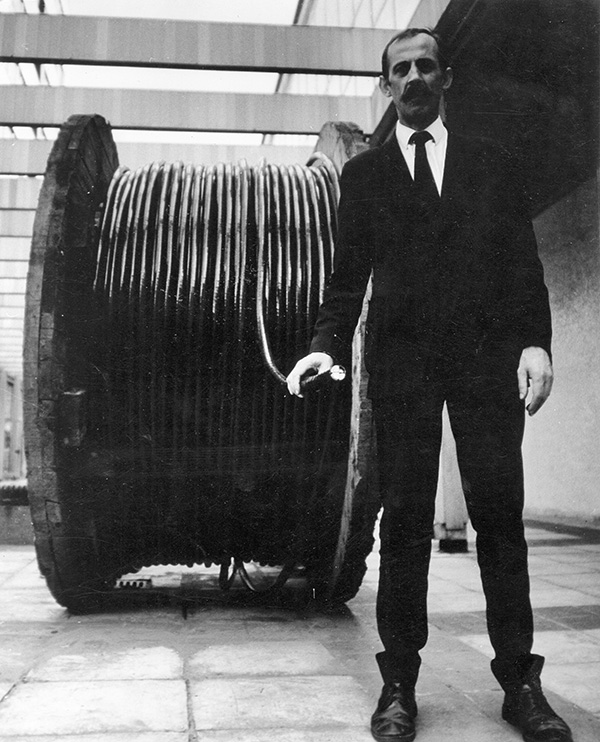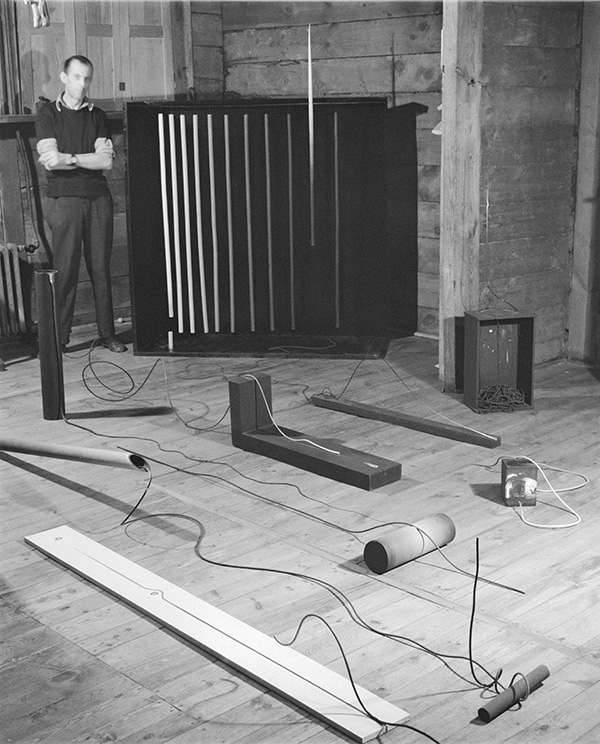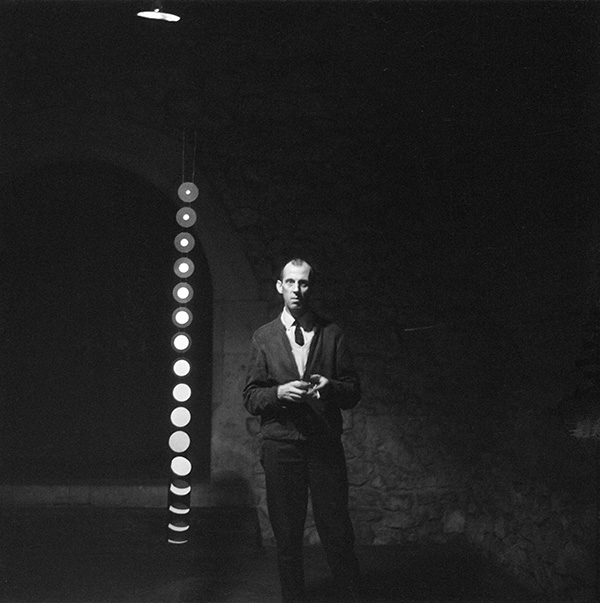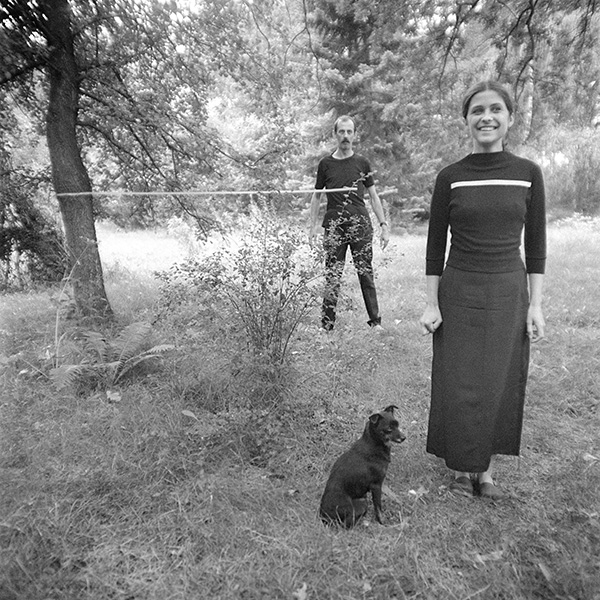ART-PRESENTATION: Edward Krasiński
 Performing across painting, sculpture, installation, and photography, Edward Krasiński was one of the most interesting protagonists of Polish Avant-Garde of the ‘60s and ’70s, an artist who was able to work with the visual vocabularies of Constructivism and Abstraction as well as of Minimalism, while maintaining at the same time a serene, enthusiasm for the absurdity of life.
Performing across painting, sculpture, installation, and photography, Edward Krasiński was one of the most interesting protagonists of Polish Avant-Garde of the ‘60s and ’70s, an artist who was able to work with the visual vocabularies of Constructivism and Abstraction as well as of Minimalism, while maintaining at the same time a serene, enthusiasm for the absurdity of life.
By Dimitris Lempesis
Photo: Stedelijk Museum Archive
Inspired by prewar Avant-Garde Movements such as Polish Constructivism, Krasiński’s work combines a wry sense of humor and a fascination with chance, his work is being currently is rediscovered by a younger generation of artists and curators. The retrospective “Edward Krasiński” at Stedelijk Museum examines his entire oeuvre, presenting 50 works from the sculptures of the early ‘60s, constructed using found materials, to his later installations, and emphasizes his experimental approach to making objects, spatial installations, and exhibitions. Edward Krasiński studied design and later painting in Krakow before moving to Warsaw in 1954. Working as an illustrator and designer, in his spare time he developed a painting practice influenced by Dada and Surrealism, but later discarded painting in favour of his own innovative artistic framework. In 1965, aged forty, and more than ten years since his move to the capital, Krasiński staged his first solo exhibition. The 1965 exhibition that marked his solo debut also announced Krasiński’s career-long preoccupation with the relationship between object, space and the beholder. It included illuminated sculptures that were suspended on thin wires in a darkened space, creating a dramatic interplay between light and shadow, arranged without any plinths or display cases, the visitors’ encounter with the objects was uninterrupted. A year later, Krasiński was among a group of artists and critics who founded the Foksal Gallery, in Warsaw, a site he would use to experiment with and refine his approach to exhibition making. In 1968 he introduced blue Scotch tape into his work. This simple, ready-to-use material, with which he connected spaces and objects, would become his trademark. Explaining its role in his work, he said, “I place it horizontally at a height of 130 centimeters everywhere and on everything. I encompass everything with it and go everywhere”. The summer of 1968 saw Polish students and intelligentsia protesting for greater freedom. After quashing the revolt, the government prohibited gatherings of more than three people. Krasiński and his friends challenged the regime by organizing “Farewell to Spring”, a ball to which the most influential figures of the Polish Avant-Garde were invited. Held in a carnivalesque setting, the event was a fusion of installation, happening, and party. In 1970 Krasiński moved into the top floor apartment of the constructivist artist, Henryk Stażewski. It was a significant move which saw Stażewski introduced him to gallerists, critics and thinkers, some of whom would impact positively on his career. In 1970 he was chosen for inclusion in the 10th International Tokyo Biennial, “Between Man and Matter”. When his works were delayed in shipping, Krasiński responded with a gesture that marked an important turn in his practice, as well as what has been said by some to herald the beginning of Polish conceptual art. The artist later explained: “I went to the post office and sent a telex repeating “BLUE” five thousand times. Before that, I had sent a telegram to Tokyo that I would send a telex at a specified time and that they should scatter the very long stripe on the podium with the earlier telegram”. This 80-metre long ‘stripe’ was duly exhibited until the arrival of the intended works. Following further instructions from Krasiński, the strip of paper containing the telex was placed in a bullet-proof glass case. Of the work’s impact, Krasiński said “After that there was nothing more I could do, it was so radical there was no turning back”. However, the epitome of his concerns for continuity might have happened after the death of his mentor and flatmate in 1988. “Hommage to Stażewski” (1989) is an exhibition that Krasiński organized at Foksal Gallery by presenting both real and fake parts of their apartment. Objects and photographs of furniture were installed in the space seamlessly, thus transforming the gallery in a temporary total work of art through the practices of illusion, displacement, and incorporation.
Info: Curators: Leontine Coelewij & Kasia Redzisz, Stedelijk Museum, Museumplein 10, Amsterdam, Duration: 24/6-15/10/17, Days & Hours: Mon-Thu & Sat-Sun 10:00-18:00, Fri 10:00-22:00, www.stedelijk.nl




